Wood Hoods are a Hot Kitchen Trend
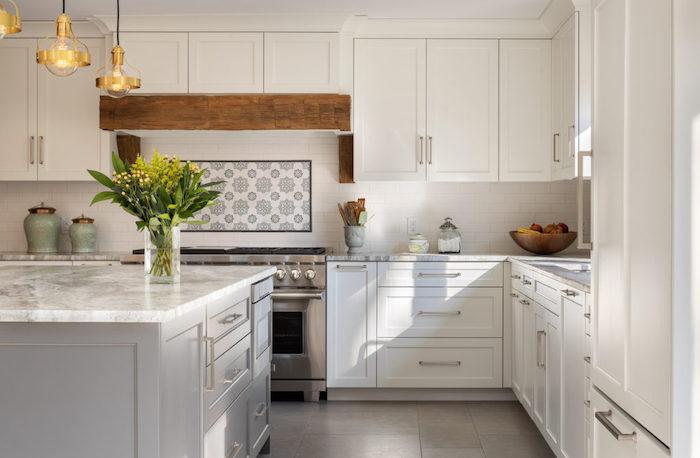
July 25, 2022
This article was originally published on July 25, 2022; it was most recently updated on January 30, 2024.
Wood Range Hoods are a Hot Kitchen Trend
One of the first questions clients ask when we discuss their kitchen is “What’s the hot kitchen trend?” I usually respond that trends come and go, while great design is timeless. No, I am not a big follower of trends. I feel that each kitchen I design is a personal reflection of the family living in the home. What do you love and want to live with? What will make you happy every morning you walk into your kitchen? Everything goes in a cycle and design is no different. Good classic design basics will carry you a long way. Let’s look at some design details I am seeing return to favor for the kitchens I am designing. One big resurgence is wood hoods – they are hot!
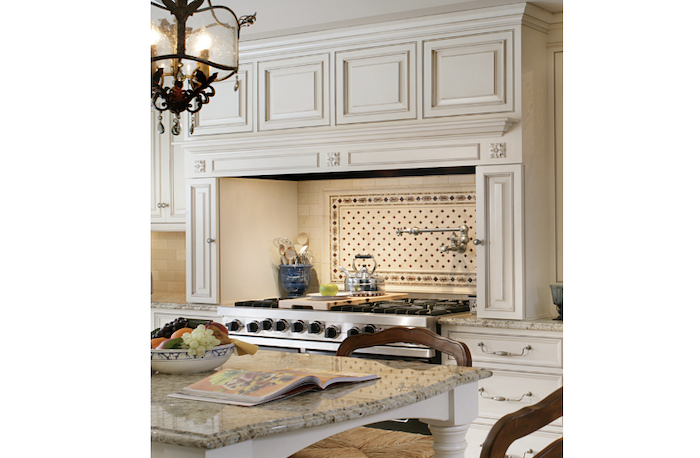
Wood Hoods vs. Stainless Steel Hoods
Some people love big stainless-steel hoods for the cleanability. I think the popularity of stainless steel hoods was a reaction to the large wood mantle hoods of a few years back. Remember when I said design is cyclical? Every kitchen seemed to have a mantle hood with sides that extended down to the counter and surrounded the range top. Those hoods had storage for spices and shelves for bottles which generally required cleaning if you were a messy cook. I have designed some lovely wood mantle hoods one of which is shown above. I am starting to see more of this hood design coming around again but with an updated look.

One of our most popular kitchens on my Instagram feed is this one (above), where I customized the hood with an antique barn beam for the mantle and corbels. I did not extend the hood to the counter top although I did have enough room for that detail. By using a wood hood, the visual line of the kitchen is uninterrupted. This kitchen in particular would have a very different look had I designed a stainless steel hood for it instead. This is a perfect example of why wood hoods are a hot kitchen trend. Clean lines in the cabinet design provide the balance to the rustic texture of the antique beam detail. This kitchen is a beautiful blend of vintage and new.
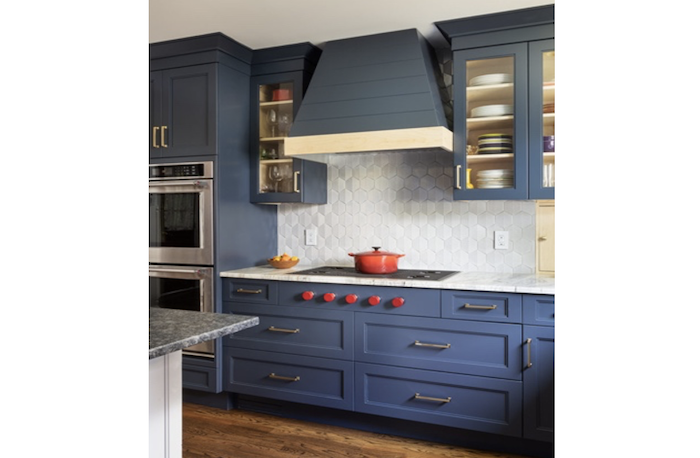
In this kitchen, I added a hood skirt in natural maple repeating the interior color inside the glass door cabinets, floating shelves and the small appliance storage cabinet. This detail on the hood added an unexpected combination of colors and materials that makes it a focal point. The horizontal detail of the ship lap makes this a hot wood hood.
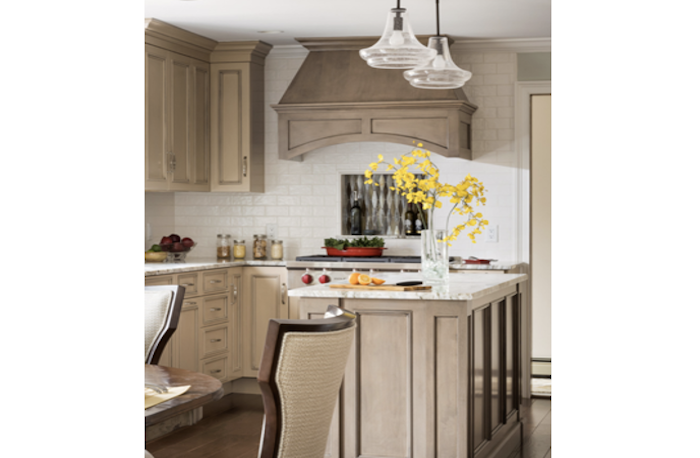
Not every wood hood needs to be surrounded by cabinets. A well-appointed hood can stand alone as a design feature. Sometimes you just do not have the space for the additional cabinets. In our “Moody Hues” kitchen, the hood stands alone as a design feature. The finish of the hood matches the island cabinets and is placed above a niche with a contrasting tile detail. We carried the white subway tile across the entire wall, which allowed the hood to be the main attraction in the kitchen.
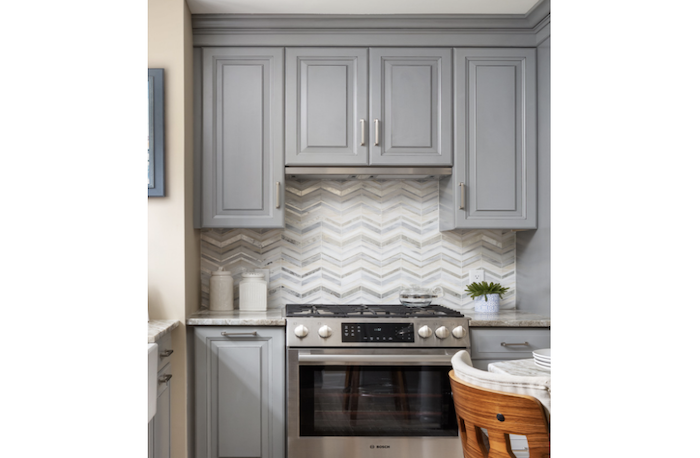
As kitchens have become more clean lined, hoods in many cases have gone into hiding. In this award-winning kitchen, the client did not want to have a stainless steel hood but did not want a traditional wood hood either, so we opted for a pull-out hood. The blower is concealed behind the cabinet doors above. The front frame of this pull-out hood is only a couple of inches wide and coordinates with the finish on both the hardware and the details in the tile backsplash.
Design Tips
Here are some important things to consider when designing a wood hood into a kitchen:
- I always oversize a wood hood above a pro range or range top by 6 inches when possible. This will protect the wood finish on the exterior of the hood from excess heat and steam if you do not turn on the blower.
- Use a liner on the inside of the hood. The best liner is stainless steel. If the fabricator suggests a stainless laminate to save money, remember that laminates can melt, as they are affected by high heat. Once again, check local code requirements.
- Follow the manufacturer and local code guidelines for clearances above the cooking surface. We work with a minimum of 36 inches off the countertop to the bottom of the hood.
- Make sure there is access to the ducting for the hood by providing a removable panel so the installer can connect the duct work into the blower.
- For petite clients, you may want to locate the blower controls in the backsplash for accessibility.
—By Sharon L. Sherman, ASID, CID, CKD, NCIDQ. She is the owner and founder of Thyme & Place Design in New Jersey
More News
April 24, 2024 | People
Oatey Announces New COO and CCO
April 23, 2024 | Trends & Inspirations
Sustainability Report: More Education Needed for Green K&B Design
April 22, 2024 | Awards & Events, Trends & Inspirations
A Look Inside the 2024 Atlanta Homes & Lifestyles Southeastern Designer Showhouse
April 22, 2024 | KBB Collective
Top Designer Shares Favorite KBIS 2024 Products
April 22, 2024 | Trends & Inspirations
Survey: Nearly Half of Homeowners Invest in Green Plumbing
April 2, 2024 | Sponsored
Whirlpool Corp. Brings Purposeful Innovation Home